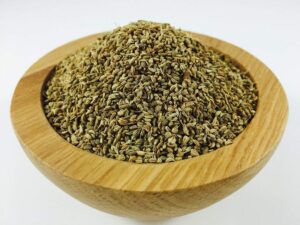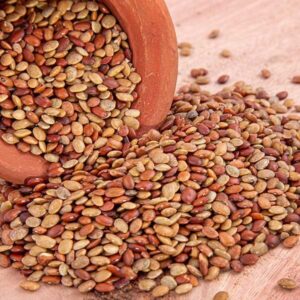Hello Bloggers, Welcome to all of you in Lifelong Health. In this article, we provide best Ayurvedic medicine and Home Remedies for weight loss without Side effects.
Ayurveda : Have you had enough of attempting diet after diet without seeing the results you want? Maybe you’re just looking for a fresh start after feeling briefly out of balance with your diet or lifestyle, or maybe you’re just ready for a more all-encompassing approach to weight loss.Ayurveda offers a straightforward, practical, and successful method for losing weight. You’ll also be regaining a strong sense of health and wellbeing along the way. In India, Ayurveda was first practised at least 5,000 years ago. It is one of the most established healthcare systems in the world, assisting millions of people in using and practicing medicine. Ayurveda is becoming increasingly popular at an incredible rate. The industry is thought to be expanding at a rate of $10 million annually. Approximately 240,000 individuals globally employ Ayurveda to treat a range of health issues. Ayurveda is that branch of medicine that supports the development of a balanced lifestyle, mindful eating, and stress management. If you’re looking for the best Ayurvedic medication for weight loss, you’ve come to the right place. Natural remedies and dietary guidelines are available to combat weight loss programs.
Greetings from the Ayurvedic weight loss method. You’re capable of doing this. Actually, it might find a way to enrich your life that no other “diet” could.
• According to Ayurveda, the word “Sthoulyam,” which means “looking obese,” is associated with obesity.
*According to Ayurveda, there is an increase in the digestive fire, or agni, which facilitates better digestion and encourages the stomach to contain more food.
• Fat tissues are difficult to transform when tissue metabolism is disrupted.
• Consuming too much cold food, oily food, and sweets vitiates the Kapha dosha, which exacerbates fat deposition.
• By combating incorrect fat deposition techniques, Ayurveda aids in their correction. By going straight after the body’s fat metabolism, it aids in maintaining the ideal body weight.
The Ayurvedic View of Body Mass
Overweight is associated with an innate excess in kapha dosha, as per Ayurveda. Although there may be other factors contributing to your battle with obesity, kapha is undoubtedly a significant one. The idea that opposites balance and that like breeds like is one of the cornerstones of Ayurveda. Many of the characteristics of kapha (heavy, slow, cool), excess weight, and smooth, dense, soft, stable, and substantive are similar.
Consequently, excess kapha in the body can cause obesity, and obesity can cause kapha in the body. On the other hand, more opposing influences—light, sharp, hot, dry, rough, liquid, mobile, and subtle—are needed to bring the system back into balance.
Regardless of how fast (or slowly) we travel, we can all reap the rewards of this strategy. Furthermore, applying Ayurvedic wisdom to weight management is a method that does not prioritize quick fixes that will ultimately fail, saving you from having to starve yourself or unnecessarily restrict your diet.
You also won’t drop a few pounds fast only to have them slowly creep back on. Rather, you will be going toward optimal health by way of a well-defined, enduring, and tried-and-true route.
It’s possible that you will need to exercise some self control at first, but eventually the body’s innate intelligence will return and replace unhealthy cravings with more sensible impulses.
As this happens, keeping these commitments gets easier and easier until it becomes second nature to follow the routine.
Ayurvedic Remedies for weight loss:
1. Triphala :
Three superfruits that are herbal and found in India combine to make triphala. Superfruits like these are:
Indian gooseberry (Amalaki) and terminalia bellirica (Bibhitaki)
Terminalia chebula, or Haritaki
It is well known that triphala can successfully lower blood glucose levels, particularly in type 2 diabetics. It’s also a fantastic method for controlling and losing weight.
It is the dried resin that the Mukul myrrh tree produces. Its effectiveness in treating weight loss has been demonstrated in clinical settings.
It is a type of extract made from the Kino tree, also known as the vijayasar tree (Pterocarpus marsupium). The removal of this tree aids in human weight management. Based on a rat study, the evidence is validated and verified.
Aloe vera can be included in your regular diet to help you lose weight. For a maximum of two weeks, you can take one teaspoon of aloe vera juice daily, about fifteen minutes prior to each meal.
Ajwain water helps adults, kids, and even postpartum women lose weight. Ajwain water has many benefits beyond weight loss, including improved metabolism, healthy digestion, improved food absorption, and relief from gas, bloating, and flatulence.
punarnava possesses anti-obesity and anti-hyperlipidemic properties. Therefore, it can lower cholesterol, improve the overall lipid profile, eliminate fat deposition on visceral organs, and reduce body weight.
One of the most common barriers to weight loss is the buildup of excess fat in the body. But black pepper might have an answer. According to studies, piperine in black pepper can prevent the adipogenic process—the production of new fat cells—by interfering with the genes and proteins involved.
Fiber and protein, two essential nutrients that are crucial for managing weight, are abundant in horse gram . Remarkably, a review of studies linked a lower risk of obesity and higher legume intake, implying that legumes like horse gram could help with weight management.
Water with honey and lemon helps burn fat.
Just grab a glass of warm water, a few drops of honey, and a teaspoon of lemon juice. This makes a delicious morning beverage. It promotes fat burning by raising metabolic activity.
Garlic and ginger tea is a well-liked supplement for weight loss. Ginger increases the metabolism-boosting properties of garlic, which has very few calories (about 4.5 per clove). To optimize the benefits of increasing metabolism, drink ginger tea first thing in the morning.
Tips to fight belly fat through Ayurveda
1. Do yoga for fifteen minutes each morning: A comprehensive set of weight loss recommendations may seem to surprise you with the first step—establishing a daily yoga practice. However, it’s not by accident that you are being asked to do yoga first thing every morning, nor that this is the first recommendation.
Yoga is a very potent practice that enhances the body, mind, and spirit of the individual. It stimulates and massages the organs of digestion and elimination, tones the muscles and joints, improves circulation, ignites the digestive fire, awakens, lubricates, and cleans the body. It also aids in detoxification.
However, yoga also calms the nervous system, balances the mind and emotions, and awakens prana, the vital. In the end, doing a little yoga in the morning creates the foundation for a successful and balanced day that is driven by clarity, insight, and a natural desire to respect oneself and one’s body rather than unneeded stress and unhealthy cravings.
While it is certainly not harmful to work for longer than fifteen minutes, your chances of success are significantly higher if your goals seem manageable. Furthermore, doing yoga for just fifteen minutes can truly transform.
So set aside a minimum of fifteen minutes. Each and every day. If you are new to yoga, a simple series of Sun Salutations (Surya Namaskar) is a great place to start. This practice is dynamic, rhythmic, and flowing. Sun Salutations balance the entire system, and can be modified to be more or less challenging—depending on the condition of each individual.
Start with a series of four and slowly build up to ten or twelve, if that feels appropriate to you. If fifteen minutes is up after eight or ten sun salutations, it’s also fine to stop there. The important thing is to work with the breath and to cultivate presence throughout the mind and body as you flow through the asanas.
If you already have a well-established yoga practice and would like to adapt it to more actively support your weight loss efforts, please explore our resource on Kapha-Pacifying Yoga. Whichever style of yoga is best for you, taking occasional (or even regular) classes can offer the depth of being guided by a trained instructor along with a vital sense of community. Yoga sessions can encourage a more serious at-home practice and help you stick with this crucial commitment.
2. Consume Three Filling Meals Every Day
Any regimen that is difficult to maintain will eventually come to an end. Maintaining a healthy Ayurvedic diet for weight loss can be made easier with three satisfying meals a day. But physiologically, this advice also makes sense.
The ideas of fire, transformation, and digestion are closely related in Ayurvedic medicine. Similar to how there is an art to building and maintaining a fire, the digestive fire also requires skill.
For a moment, picture yourself holding a tiny match up against a large log in an attempt to start a fire. Isn’t it hopeless? It is possible to put out a fire even after it has started by adding small amounts of fuel gradually or by adding too much fuel all at once. Now consider how ludicrous it would be to anticipate that a fire would continue to burn without any new fuel being added.
Similar to this, a healthy metabolism needs the right kindling and a consistent, dependable supply of fuel, spaced appropriately apart. Eventually, the digestive fire will go out if we stop eating completely.
Put another way, a slow metabolism may be made even slower by undereating. Eating meals that are the right size and at the right times will help to effectively stimulate the digestive system because the body won’t be overburdened by the amount of food it needs to break down or the frequency with which it is being consumed. A key balance is achieved by eating three small, easily digested meals a day without snacking in between. It makes sure the digestive fire is fired up just enough and in fact makes it stronger.
Your next commitment will revolve around what you eat, which will matter. However, timing and technique of eating are also crucial. The guidelines that follow will aid in optimizing your advancement.
Don’t Eat Between Meals Snacks
Eliminating snacks can be a difficult adjustment to make, but it can be very beneficial for weight loss. When the digestive fire can finish one meal before being asked to break down another, it is at its strongest and most effective. As a result, it is recommended to space meals out by at least four hours.
It’s interesting to note that the body tends to use stored fat as energy when it takes this natural pause between meals, as it kickstarts fat metabolism.1. As a result, giving up snacks is a great way to encourage your body to burn off the stored excess. If you find yourself wanting to snack, try a cup of hot water mixed with a teaspoon of honey and a squeeze of lime juice.2. If you really must eat something, consider some carrots, celery sticks, or a few raisins.
Make lunch the main course.
Eating your main meal at lunchtime (ideally between 11 a.m. and 2 p.m.) will maximize your body’s naturally increased capacity for digestion, which is strongest at midday.
Dinner should be as light as possible.
A light dinner helps your body’s natural detoxification processes that take place over night by allowing your stomach to empty itself before you go to sleep (ideally eaten by 5 or 6 p.m.). If you refrain from eating anything after 7 p.m., you will have greater success even if it is not possible to eat this early. Bring Your Whole Self to Every Meal.
Bring Your Whole Self to Every Meal
Eating is a loving and sacred act. Therefore, it’s ideal to eat in a quiet, unhurried setting free from strong emotions, loud talk, television, and any form of multitasking.Give thanks to your body for the gift of nourishment it is currently receiving. And pay attention to the subtle cues that your hunger is being satisfied; ideally, you should finish your meal before you feel full.These techniques lower the risk of overeating, promote a feeling of fullness, help avoid the development of unhealthy cravings in between meals, and enable your body to fully register the tastes and textures of the food you eat.
Before eating, light the digestive fire if you’d like.
If you are motivated to go even farther, you can chew a slice of fresh ginger, about the size of a nickel, with a pinch of sea salt, a few drops of lime juice, and about 1/4 teaspoon of honey thirty minutes before lunch and dinner to help stoke the digestive fire.
3. Consume a Diet Rich in Kapha
As we’ve seen, being overweight is essentially related to excess kapha, but it can also lead to a sluggish metabolism, attachment, greed, resistance to change, lethargy, excessive sleep, and a feeling of heaviness in the body and mind.A kapha-pacifying diet supports the body in reaching a more balanced weight while enhancing general health by removing excess kapha from the system and bringing about change in all of these areas. Essentially, the goal of a kapha-pacifying diet is to counteract an excess of kapha by prioritizing light, warm, dry, rough, and highly digestible foods. Generally speaking, steer clear of processed foods and cold, stale foods in favor of freshly prepared, seasonally appropriate whole foods. If you were born with a vata or pitta predominant dosha, you might be wondering if a kapha-balancing diet is appropriate for you. Following a kapha-reducing diet while trying to lose weight is generally acceptable as long as you pay attention to how your body reacts and adjust as necessary. Everyone is different, so it’s always a good idea to get advice from an Ayurvedic practitioner who can support your particular needs as you lose weight. Appropriate meal pairings can also greatly aid in promoting better digestion. Many of us find it strange that this ancient understanding of what foods should and shouldn’t be eaten together exists in our fast-paced modern culture. Given this, it’s advisable to gradually adopt healthy food combining practices by first raising awareness of any inappropriate pairings that frequently occur in your diet. Make gradual, doable changes one at a time when you’re ready. It’s also critical to keep in mind that we don’t have to give up everything we’ve grown to love in order to adhere to an Ayurvedic diet for weight loss. Finding moderation in our decisions can be a great place to start when trying to get things back in balance. As we get healthier, our bodies get better at identifying wholesome, life-affirming foods and rejecting diets that are harmful to our health because our cravings for unhealthy foods will decrease. It takes time to complete this process, so persistence and patience are key.
4. Work Out Three or More Days a Week
A key element of any weight loss plan is aerobic exercise. This is an additional commitment to your regular yoga practice. Put your attention on things that you find enjoyable, achievable, and energizing.
Adopting a shorter exercise regimen can help those of us with hectic schedules feel less overwhelmed and more successful.
The good news is that even fifteen to twenty minutes of exercise can have a significant positive impact. Of course, it’s acceptable if your ideal workout regimen is longer. The effectiveness of your exercise program can also be impacted by the way and when you exercise. We learn from Ayurveda that some times of the day are better for exercising than others.
Approximately 6–10 a.m. and p.m. are the kapha times of the day, when atmospheric conditions give the system a little extra strength and endurance.
Plan your activities during this window in the morning or the evening for the best outcomes. Naturally, if those times aren’t convenient for you, find one that is; any time you exercise is better than none at all.
Additionally, according to Ayurveda, we should exercise between fifty and seventy percent of our potential, ideally breathing through our nose the entire time. By doing so, physiological stress is avoided and the body is able to benefit. This method works for gym cardio exercises as well as walking, hiking, running, cycling, yoga, and swimming.
Another strategy is to alternate between well-planned recovery intervals and brief, high-intensity bursts of physical activity. This strategy, which gives the body a break between periods of high activity, is supposed to more closely resemble the hunter-gatherer lifestyle that we evolved.4.
Around this idea, the fitness technique known as High-Intensity Interval Training (HIIT) has grown in popularity in recent years. HIIT could be especially helpful for those of us who have limited time for exercise, as most workouts last between eight and thirty minutes. A brief warm-up, three to ten quick sprints (lasting twenty to sixty seconds each), brief recovery intervals (ten to sixty seconds each), and a cool-down phase are typically included in an HIIT program.5.
Surprisingly, an increasing amount of research indicates that HIIT may be a better weight loss aid than conventional cardio exercises by increasing metabolic function, lowering insulin resistance, burning fat, and promoting weight loss.Six
Whatever your favorite form of exercise, the most crucial thing is to make it an exciting and motivating part of your week so that you will be inspired to stick with it. Kindly consult your physician prior to beginning a new fitness regimen.
5. Create a Daily Schedule
Establishing a daily routine can actually be the key to success with this approach in the busy world we live in today.
Establishing a sense of routine not only helps us develop positive, sustaining habits and makes our commitments a natural part of our days, but it also calms the nervous system, promotes a more focused and serene state of mind, and lessens stress.
Although it makes intuitive sense that lowering stress would aid in weight loss, there are strong physiological arguments in favor of this. Establishing a daily routine may be the most significant commitment you make when it comes to stress management, even though the details are outside the purview of this essay.
Everybody is advised to follow a daily routine as a fundamental component of an Ayurvedic lifestyle, and there are many different traditional practices to pick from. However, it’s crucial to avoid taking on more than you can handle. Begin with the fundamentals. As you grow used to the new rhythm and are motivated to deepen your practices, you can add to your routine.
The daily routine components listed below can be especially helpful for weight loss.
Set Up a Sleep and Wake Schedule
Ayurveda offers some insightful advice regarding when we should go to bed. The kapha period of the day, which occurs in the evening (6–10 p.m.), is particularly heavy, slow, and dull; it is the best time to allow our bodies to wind down and get ready for sleep.
There’s a natural lull in energy during these evening hours for many people. But after around 10 p.m., pitta’s fiery influence takes over, so if we are not asleep or in bed by then, we might feel energized again and find it very hard to wind down and sleep until much later. An earlier bedtime is definitely more beneficial in the interests of obtaining adequate sleep and synchronizing with the cycles of nature.
Recurring in the early morning, from roughly 6 to 10 a.m., is kapha time. This time of day gives morning workouts more strength and endurance, but it can also make us feel drowsy and lethargic if we are not completely awake when it arrives.
As a result, we advise that you rise by six in the morning. You’ll feel more awake and focused, and your body’s ability to metabolize energy will be better supported.
You should go to bed by 10:30 p.m., for instance, if your ideal wake time is 5:30 a.m. and you are aware that you require at least seven hours of sleep to feel your best. On the other hand, you should go to bed at 9:30 p.m. if you require eight hours of sleep to function well.
Should any of these necessitate a substantial alteration to your present sleeping patterns, think about modifying your sleep and wake schedules by roughly fifteen minutes at a time. Work with each new schedule for a few days before introducing another fifteen minutes.
Make Time for Your Morning Yoga Practice of Fifteen Minutes
Even though it’s only fifteen minutes, making time for your yoga practice every day is crucial; otherwise, it may become neglected. The ideal time to practice is before breakfast in the morning, but if that doesn’t work for you, find another time of day when you can do it without eating.
Establish a Fitness Schedule
While ensuring that you exercise for three days a week is the main goal of this schedule, establishing consistency with your new routines will also be beneficial.
Finding what works best for you may take some trial and error, but once you settle on a pattern, be persistent and don’t let it slip. Staying busy on a regular basis will be very beneficial.
Best ayurvedic medicine for weight loss without side effects
1. Herboslim: Ayurvedic Weight Loss Medicine
This medication aids in the battle against visible fat. It is intended to enhance metabolism and has clinical proof. One benefit of the medication is that it can help you resist cravings, which can help you avoid gaining weight. This doctor-approved medication is made from a combination of pure herbs, including methi, musta, apimark kshar, and pippali, and is known to have no negative effects on the body.
2. Guduchi Obesidat
An offer to purchase three at a discounted rate of two is included. A dozen special herbs, including Bakuchi, Maricha, and Chitraka, go into making it. The medication lowers gastrointestinal fat absorption by inhibiting lipase and improving metabolism. Women who are pregnant or nursing should not use this medication.
3. Organic India Weight Balance
The medication aids in decreasing the absorption of carbohydrates and increasing metabolism. You can use this medication in conjunction with a nutritious diet and moderate exercise to achieve better results. The medication’s abundance of antioxidants helps shield you from stress and help you get through exhaustion.
4. Medohar Guggulu – For Weight Management
This herbal remedy for obesity aids in fat burning and enhances digestion. It can be taken after eating or as directed by a doctor, and it is safe for use by both men and women.
5. Guduchi Weight Loss Regimen for Hypothyroid. Obesidat & NAV-C Capsules with G2O Water Mix
Through the correction or attack of cell-to-cell metabolism, it aids in the reduction of unwanted body fat. One tablet can be consumed thirty minutes prior to breakfast or lunch, and another tablet can be consumed thirty minutes before dinner.
Conclusion:
The use of Ayurvedic medicine dates back thousands of years. Ayurvedic medicine still has a lot of fans because of its low side effects. We’ve included a list of numerous Ayurvedic medications along with some advice in this blog. For weight loss, you still need to make some dietary changes and take certain medications. Losing weight is a comprehensive strategy that is doable. we sincerely hope you found Best ayurvedic medicine and Home Remedies for weight loss, what you were searching for and that the post was beneficial to you.
FAQ:
Which Ayurvedic treatments are effective for losing weight?
1. Trivancha
2. Guggul
3. Kalonji
4. The Kino or Vijayasar tree
Is using Ayurvedic medicine to help lose weight acceptable?
Taking ayurvedic medication for weight loss is acceptable. Numerous minimally side-effecting ayurvedic medications are available on the market. There are, nevertheless, a few research works on ayurvedic medicine.
What is the best herbal medication without side effects for losing weight?
The best ayurvedic weight-loss medications are Garcinia, Medohar Guggul, Methi, Apamarg kshar and pippali.
You MAy Also Read : 15 Indian home remedies for cough during pregnancy : Natural ways to Find Relief

















1 thought on “Best ayurvedic medicine and Home Remedies for weight loss without side effects”